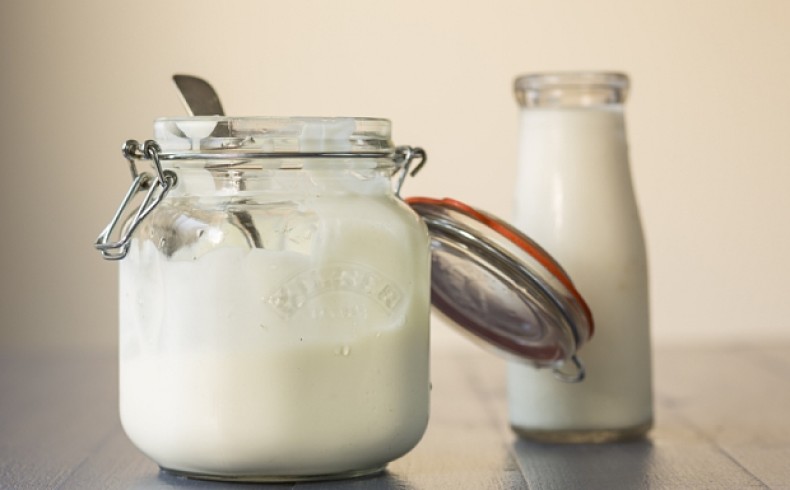
Kefir is a naturally fermented beverage that’s a little bit like drinkable yogurt. It’s traditionally made from cow’s milk, but because my program is cow’s dairy free, I recommend using coconut milk instead. I actually prefer coconut milk kefir because it’s naturally sweeter and doesn’t have the sour flavour like cow’s milk kefir. Including kefir in your diet is a great way to restore and maintain your healthy gut flora colonies which help to boost your immune defences; reduce inflammation and balance your moods.
The key ingredient to making coconut milk kefir are kefir grains – live active cultures containing (friendly) yeast and bacteria. They are called ‘grains’ because of their appearance and you only have to buy them once and can be found online. Alternatively you can buy a powdered starter culture, but it contains fewer bacteria strains, making it more costly over time is.
What you’ll need…
1 tablespoon of kefir grains
1 can of coconut milk (or 1-2 cups of refrigerated coconut milk)
How to make…
If you are using kefir grains bought online, they will need to be need to be re-hydrated in cow’s milk. Do this by combining the grains with 1 cup of cow’s milk in glass container and cover with a tea towel or cloth and leave in room temperature for 5-7 days. Strain the grains each day, discarding the milk before replacing with a cup of fresh cup of milk. When the batches of milk take on a slight fermented smell and thicken, your grains are ready.
Combine the grains with coconut milk in a glass container. Cover with a cloth and secure with a rubber band and allow to sit in a warm place between 20 – 30C degrees C (68-85 fahrenheit) for 12-24 hours. Once the coconut milk has thickened and has a slightly sour flavour, your kefir is read! Remove the grains and refrigerate.
How to care for your kefir grains
Place the grains in fresh cow’s milk at room temperature to create a new batch of kefir, made on either coconut or goat’s milk. Alternatively store the grains in a cup of cow’s milk in the refrigerator. The grains can be kept indefinitely to make kefir, although be aware that if you store the grains in the fridge instead of continuously making kefir, it may take a few batches to get them going again.
Sally’s Tips…
If your first batch of coconut milk kefir doesn’t get as thick or tangy as you’d like, never fear! It can take a few batches to get the kefir grains going with the coconut milk.
Be sure to store the grains in cow’s milk vs coconut milk between batches.
Only use a glass container or canning jar and a wooden or plastic spoon to make kefir – and never use a metal container or spoon to stir it, as this disrupts the process and the kefir won’t thicken.
If the kefir fails to thicken with 24 hours, it might be that the room temperature isn’t warm enough.
If the kefir fails to thicken within 48 hours, discard the milk and start again by putting the grains in a fresh batch of milk.
Kefir should have a fermented aroma and can sometimes have a slight effervescence, but should never smell foul or unpleasant.


Health & Lifestyle Tips
Delicious Healthy Recipes
Educational & Recipe Videos








